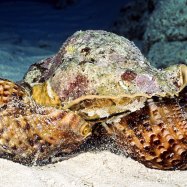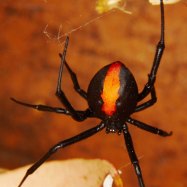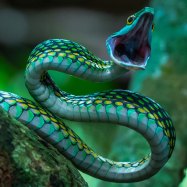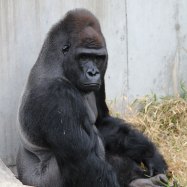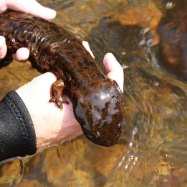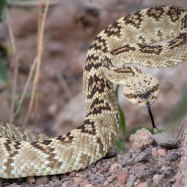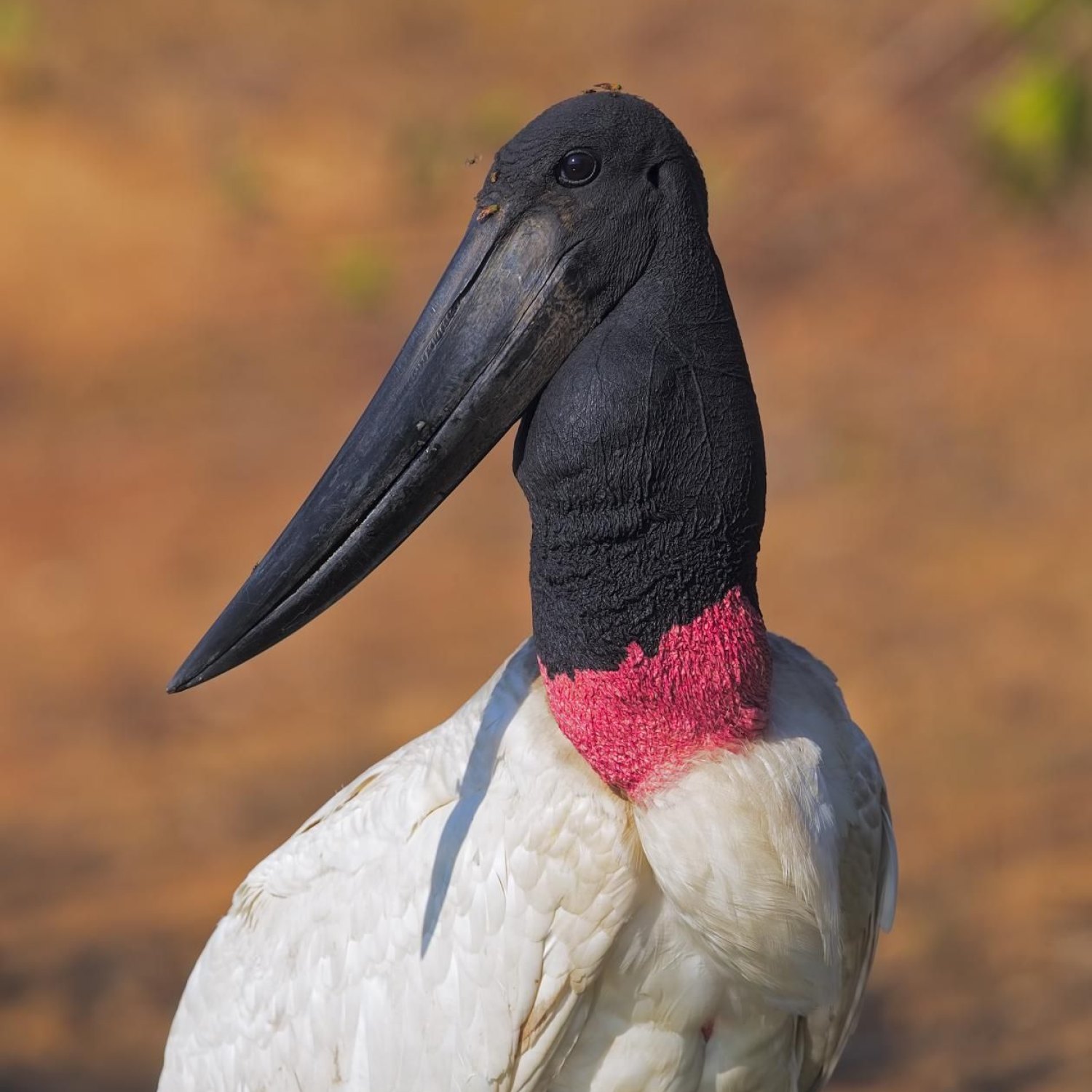
Jabiru
120 to 140 cm (47 to 55 in)
The Jabiru, also known as the Amazonian stork, is a majestic bird found in the Amazon rainforest. It can reach a length of 120 to 140 cm and belongs to the Ciconiidae family. With its tall, long-legged, and large-bodied shape, it is a sight to behold. Keep your eyes peeled when exploring the Amazon for a chance to spot this magnificent creature. #Jabiru #AmazonRainforest #Ciconiidae #AnimalFacts
Animal Details Summary:
Common Name: Jabiru
Kingdom: Animalia
Habitat: Wetlands, marshes, and swamps
The Majestic Jabiru: A Magnificent Bird of the Amazon Rainforest
The Amazon rainforest is home to a vast array of diverse and unique species. One such species is the majestic Jabiru (Jabiru mycteria). This bird, also known as the "giant stork", is the tallest flying bird in South and Central America. Its impressive physical features and fascinating behavior have captured the interest of researchers, nature enthusiasts, and tourists alike Jabiru.A Bird with Many Names
The Jabiru is a name derived from the indigenous Tupi-Guarani people, meaning "swollen neck". This name accurately describes the prominent neck pouch of the Jabiru, used for displaying during mating rituals. The scientific name, Jabiru mycteria, is derived from the Greek words "mykteria", meaning "nose", and "jybēreuein", meaning "to peck". This refers to their large, wedge-shaped bill, used for catching prey. In English, this magnificent bird is commonly known as the Jabiru, but it also goes by other names such as "tuyuyu" in the Amazon region and "jabirú enano" in Colombia.A Proud Member of the Animal Kingdom
The Jabiru belongs to the kingdom Animalia, making it a living, multicellular organism capable of moving and responding to stimuli. It is part of the phylum Chordata, characterized by the presence of a spinal cord and supporting rod-like structure called a notochord. As a bird, the Jabiru falls under the class Aves, which comprises animals with feathers, wings, and the ability to fly.A Graceful Giant of the Wetlands
Jabiru belongs to the order Ciconiiformes, which includes other waterbirds such as storks, ibises, and herons Jaguar. Within this order, it belongs to the family Ciconiidae, comprising large wading birds with long legs and a long bill. These physical characteristics make the Jabiru perfectly adapted to its preferred habitat, which mainly consists of wetlands, marshes, and swamps.The Wetland Hunter
The Jabiru is a carnivorous bird that feeds on a variety of prey found in its natural habitat. Being a skilled hunter, it uses its long bill to catch fish, amphibians, and crustaceans from shallow waters. It can also catch insects, small reptiles, and even small mammals like rodents and young birds. The Jabiru has been observed using its powerful beak to impale larger prey, such as snakes and turtles, before swallowing them whole.Geographical Distribution and Country of Origin
The Jabiru is a native of South and Central America, with its distribution ranging from southern Mexico to northern Argentina and Uruguay. However, Brazil remains its primary country of origin, with the highest population of 7,000 birds in the Pantanal region. The Pantanal is the world's largest freshwater wetland and is renowned for its abundant wildlife, including the Jabiru.Finding Jabiru in the Amazon Rainforest
The Jabiru prefers to breed and nest in remote areas with little human disturbance, making it challenging to spot them in the wild. However, the Amazon rainforest is the perfect location to encounter this majestic bird in its natural habitat. With its vast wetland areas and high biodiversity, the Amazon provides an ideal environment for the Jabiru to thrive. Visitors can take guided tours to the Pacaya-Samiria National Reserve, a protected area in the heart of the Amazon, to spot this iconic bird.A Colorful Bracelet on a Black and White Outfit
The Jabiru is a sight to behold with its striking black and white coloration. Its head, neck, and upper body are covered in glossy black feathers, while the rest of its body is white. However, what sets this bird apart is a bright red or pink ring around its neck, giving it the appearance of wearing a colorful bracelet. This unique coloration is a characteristic of mature adults and is used in courtship displays.Bodies Built for the Wetland
The Jabiru's body is designed for life in the wetlands. It is a tall, long-legged bird standing at an impressive height of 120 to 140 cm (47 to 55 in). Their long legs and broad feet help them navigate through muddy and swampy areas while foraging for food. The average weight of a Jabiru is around 4.3 kg (9.5 lbs), making it one of the heaviest flying birds in South and Central America.Breeding and Mating Rituals
The breeding season for the Jabiru begins in October and continues until December. During this time, male Jabirus use their neck pouches to attract females, displaying them during elaborate courtship displays. Once a pair is formed, they create a large, flat nest on top of tall trees or in tall grasses near the water's edge. Females lay one to five eggs, and both parents take turns incubating the eggs for around 32 days. After hatching, the chicks are cared for and fed by both parents until they are ready to fledge at around 70 days old.The Jabiru and Humans
The Jabiru has faced threats from human activities such as deforestation, pollution, and hunting. However, conservation efforts have helped to maintain and increase their populations. These efforts include protecting their natural habitats and promoting ecotourism, which provides economic incentives for local communities to protect the birds and their habitat. The Jabiru is also under protection through international treaties, such as the Ramsar Convention on Wetlands and the Convention on International Trade in Endangered Species.In Conclusion
The Jabiru is a remarkable bird with impressive physical features and unique behaviors. Its presence in the Amazon rainforest is an important indicator of the forest's health and plays a vital role in maintaining the balance of its ecosystem. As responsible citizens, it is essential to appreciate and protect these magnificent birds and their natural habitat. So, next time you find yourself in the Amazon rainforest, keep an eye out for the grand Jabiru and experience the wonder of this magnificent bird.

Jabiru
Animal Details Jabiru - Scientific Name: Jabiru mycteria
- Category: Animals J
- Scientific Name: Jabiru mycteria
- Common Name: Jabiru
- Kingdom: Animalia
- Phylum: Chordata
- Class: Aves
- Order: Ciconiiformes
- Family: Ciconiidae
- Habitat: Wetlands, marshes, and swamps
- Feeding Method: Carnivorous
- Geographical Distribution: South and Central America
- Country of Origin: Brazil
- Location: Amazon rainforest
- Animal Coloration: Mainly black and white
- Body Shape: Tall, long-legged, and large-bodied
- Length: 120 to 140 cm (47 to 55 in)
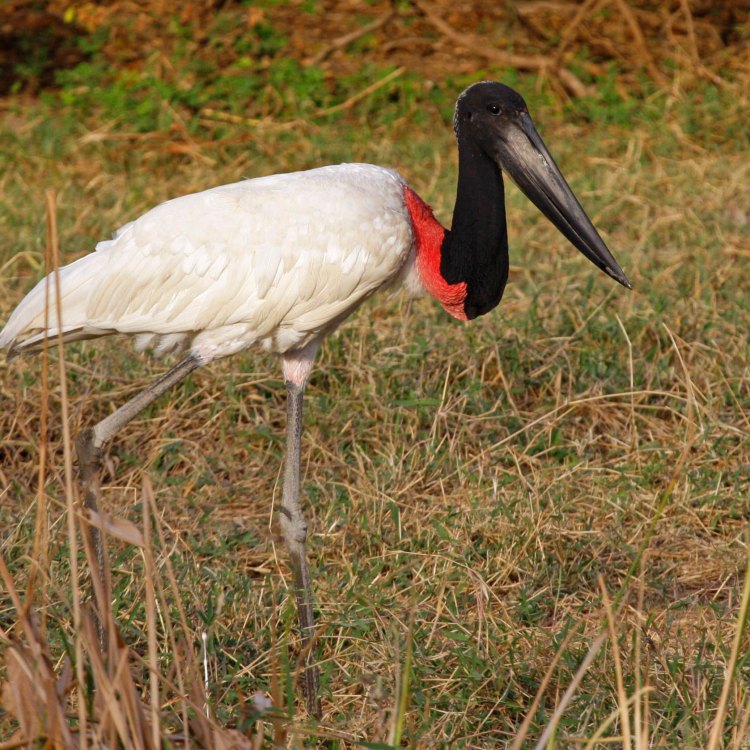
Jabiru
- Adult Size: Large
- Average Lifespan: Approximately 30 years
- Reproduction: Sexual
- Reproductive Behavior: Pair bonding and nesting
- Sound or Call: Loud, trumpeting call
- Migration Pattern: Partially migratory
- Social Groups: Solitary or in small groups
- Behavior: Diurnal and territorial
- Threats: Habitat loss and degradation, pollution, hunting, and invasive species
- Conservation Status: Least Concern
- Impact on Ecosystem: Key species in wetland ecosystems
- Human Use: Important in indigenous cultures, birdwatching
- Distinctive Features: Large size, long bill, white plumage on head and neck
- Interesting Facts: The Jabiru is the tallest flying bird in South and Central America.
- Predator: No significant natural predator
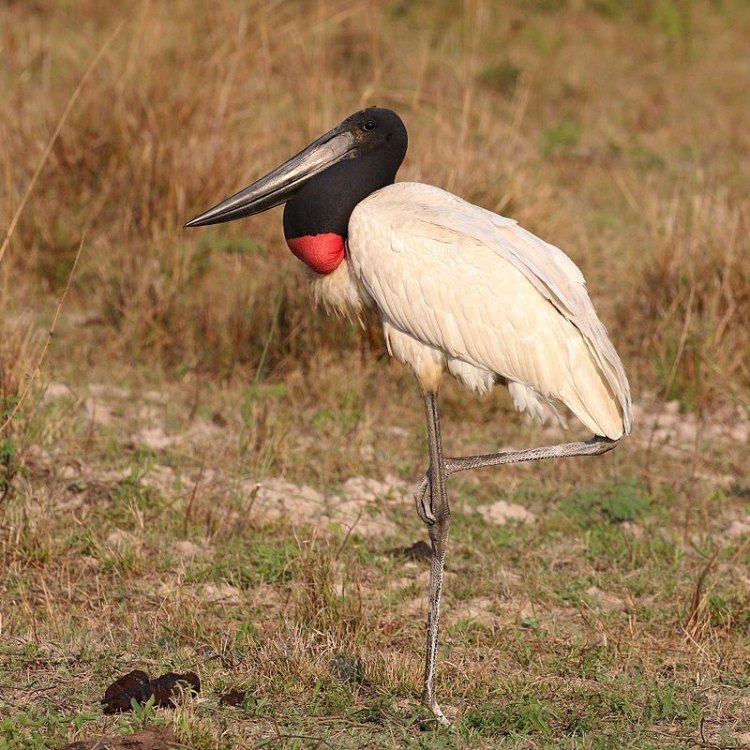
Jabiru mycteria
The Majestic and Mysterious Jabiru: A Key Species in Wetland Ecosystems
In the vast wetlands of South and Central America, there is a bird that stands tall, both in size and significance to the ecosystem. This bird is the Jabiru, a magnificent and mysterious species that has captured the attention of birdwatchers and indigenous cultures alike. With its striking appearance and unique features, the Jabiru plays a vital role in its habitat, making it a crucial species for conservation efforts.The Jabiru, also known as the Black-necked Stork, is a large bird that can reach an impressive height of up to 5 feet PeaceOfAnimals.Com. They have a wingspan of over 8 feet and can weigh up to 20 pounds, making them the tallest flying bird in South and Central America. These majestic creatures have a life expectancy of approximately 30 years, with some individuals living up to 40 years in captivity.
Reproduction plays a vital role in the Jabiru's life cycle, and they follow a sexual reproduction pattern. During the breeding season, which typically starts in the dry season and lasts until the beginning of the rainy season, Jabirus exhibit a unique behavior of pair bonding and nesting. They form monogamous bonds and will often return to the same nest year after year.
The nesting process begins with the male building a large nest, typically on tall trees or in wetland areas. The female then lays her eggs, usually 2-3, and both parents take turns incubating them for 30-35 days. After the chicks hatch, they are fed by their parents for several months until they are ready to fledge and leave the nest. This reproductive behavior makes the Jabiru an essential species for maintaining healthy populations in their habitat Javan Leopard.
One distinct feature of the Jabiru is its loud, trumpeting call, which can be heard from a great distance. This call is often used for communication between mating pairs, defending territory, and alerting other birds to potential danger. It is a powerful and unmistakable sound that adds to the mystique of this magnificent bird.
The Jabiru's behavior is also an essential factor in their ecological role. They are diurnal and can be found foraging for food during the day. They are primarily territorial birds and will fiercely defend their feeding and nesting areas from other Jabirus and larger predators such as eagles and hawks. Their diet consists of a variety of fish, frogs, insects, and small reptiles, making them key species in maintaining the balance of their wetland ecosystem.
While the Jabiru is primarily a solitary bird, they can be found in small groups foraging or nesting during the breeding season. However, during the non-breeding season, they tend to disperse and become partially migratory, traveling in search of food and suitable nesting sites. These migratory patterns also play a significant role in maintaining genetic diversity among populations.
Unfortunately, the Jabiru faces numerous threats that put its survival at risk. Habitat loss and degradation due to human development and agricultural expansion are one of the most significant threats to this species. Wetlands are vital for the Jabiru's survival, as they provide essential resources like food and nesting sites. Pollution, hunting, and the introduction of invasive species are also major threats to the Jabiru's population.
Despite these threats, the International Union for Conservation of Nature (IUCN) has listed the Jabiru as a species of Least Concern on the Red List. However, ongoing conservation efforts are necessary to ensure the long-term survival of this magnificent bird. Many organizations, such as the Wetlands International and the Wildlife Research & Conservation Society, are working to protect the Jabiru's habitat and address the threats it faces.
The importance of the Jabiru in its habitat goes beyond its ecological role. This bird is also significant in indigenous cultures, where it holds spiritual and cultural significance. The Jabiru has been featured in many indigenous myths and legends and is often associated with rain and fertility. It is also an essential species for ecotourism, attracting birdwatchers from around the world to observe and appreciate its beauty.
In conclusion, the Jabiru is a key species in the wetland ecosystems of South and Central America. From its distinctive features to its behavior and role in the ecosystem, this majestic bird is truly a unique and remarkable species. However, with the ongoing threats it faces, it is crucial for us to recognize and protect this species for future generations to appreciate and admire. Let us work together to ensure the survival of the Jabiru and other wetland species for a healthy and balanced ecosystem.
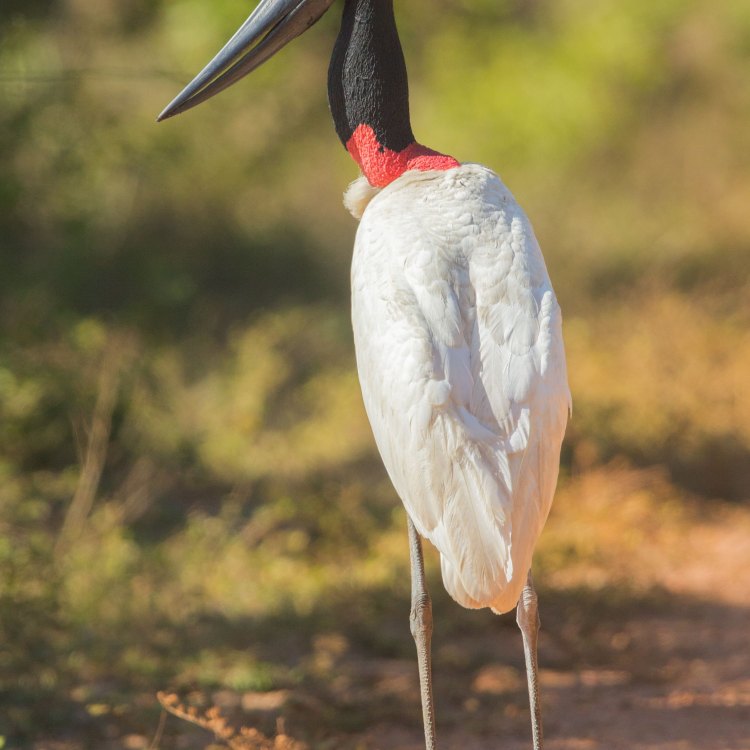
The Majestic Jabiru: A Magnificent Bird of the Amazon Rainforest
Disclaimer: The content provided is for informational purposes only. We cannot guarantee the accuracy of the information on this page 100%. All information provided here may change without prior notice.


